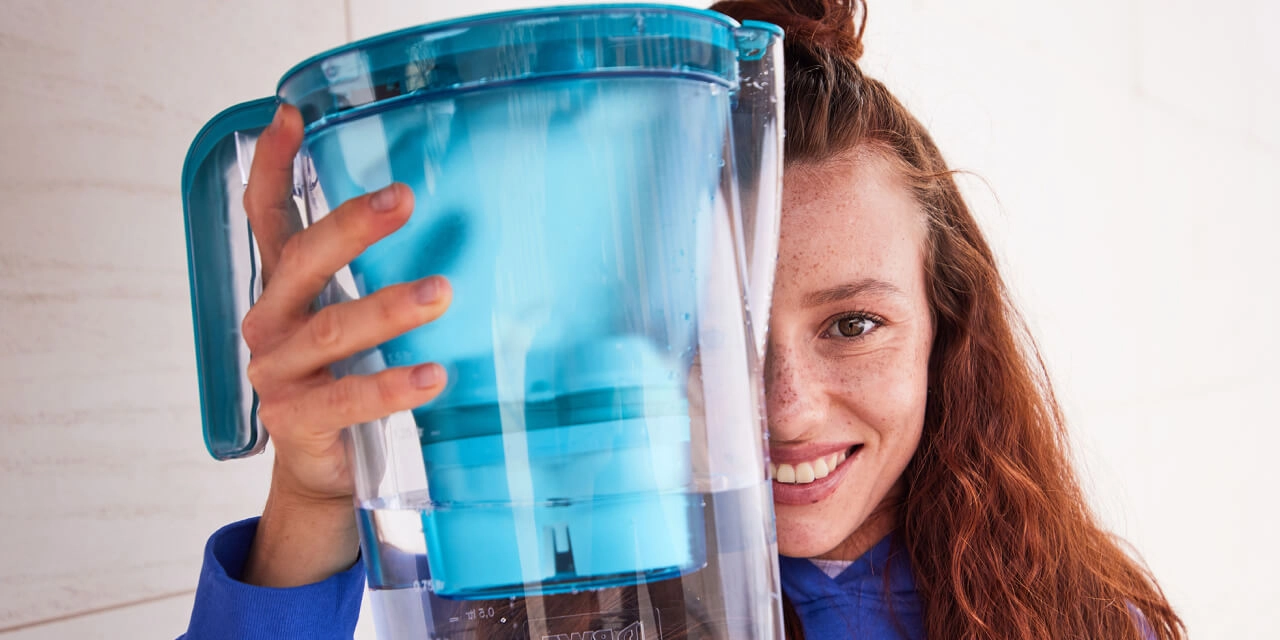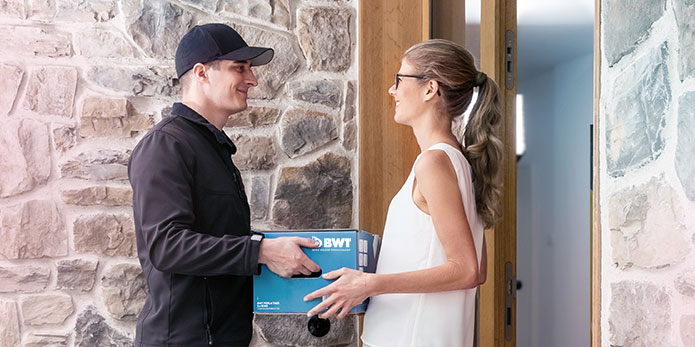BWT R1 Backwash filter HWS 1"
Domestic Water Station with 2-phase backwash technology
Product number: 9022000403705
This article is currently only available on request.
- Manual backwash filter with integrated pressure reducer
- Intensive cleaning through 2-phase backwash technology
- For horizontal and vertical installation
- 10-year warranty (with product registration)
- Quick installation through HydroModul
Description
The BWT R1 backwash filter is installed to keep particles and impurities such as rust and sand, which can be caused by new connections and maintenance work on the pipe network, away from the drinking water installation in the house. The installation of such a drinking water filter or similar in every domestic installation is even mandatory according to relevant standards. Without a protective filter, these particles can cause everything from dripping taps in the bathroom or kitchen to malfunctions of washing machines and other household products.
- Durable, robust, powerful
- Including rotatable connection technology
- Available with and without pressure reducer
- Quick installation with HydroModule (3/4" to 1 1/4")
- For horizontal and vertical installation
- Particularly intensive cleaning through 2-phase backwash technology
- Perfect drinking water hygiene through simple handling, which should be backwashed every 2 months to ensure perfect hygienic drinking water.
Technical details
| Dimension house water filter: | 352 mm |
|---|---|
| Fitting length with/without screw connection: | 100/184 |
| Mesh size filter: | 90 - 100 µm |
| Operating pressure min./max. bar: | 2.5/16 bar |
| Outlet pressure after pressure reducer: | 2 - 6 bar |
| Water temperature min./max.: | 5/30 °C |
FAQs
Das Filterelement des E1 Einhebelfilters bzw. eines Wechselfilters muss lt. Norm alle 6 Monate getauscht werden. Bei Rückspülfiltern soll die Filterreinigung alle 2 Monate durchgeführt werden.
ÖNORM EN 806-2, Technische Regeln für Trinkwasser-Installationen, Planung:
Kapitel B.3: „Schwebstoffe …lagern sich in Rohren ab…können dadurch sowohl Wachstum von Mikroorganismen als auch Korrosion hervorrufen...ebenso können Schwebstoffe zu Funktionsstörungen und Verstopfungen angeschlossener Apparate führen." Um diesen Risiken vorzubeugen...sollte der Einbau eines mechanischen Filters am Beginn der Hausinstallation in Betracht kommen"
Kapitel B.4. „…Siebe an Wasserzählern oder Entnahmearmaturen (= Strahlregler) als Schutz vor Partikel- und Schwebstoffeintrag nicht ausreichend.“
ÖNORM B 2531: 2019, Technische Regeln für Trinkwasserinstallationen, nationale Ergänzung zur ÖNORM EN 806:
Kapitel 4.8.3.5, Schutz gegen Eindringen von Partikeln: System und Einbauteile sind bei Bedarf vor Fehlfunktionen zu schützen, z.B. durch den Einbau eines mechanisch wirkenden Filters nach ÖNORM 13443-1. Wartungsintervalle sind besonders aus hygienischen Aspekten zu beachten.
Kapitel 4.10, Schutz des Wassers in den Verbrauchsanlagen: Alle Anlagen für die Trinkwassernachbehandlung bedürfen hinsichtlich Bauart und Wirkungsweise einen Prüfbericht über die gesundheitliche Unbedenklichkeit.
ÖNORM EN 13443, Anlagen zur Behandlung von Trinkwasser innerhalb von Gebäuden – mechanisch wirkende Filter:
Anhang B, Kapitel B.4: Mindestens alle sechs Monate muss das Filterelement in einem Filter ausgetauscht werden (Einwegfilter) oder rückgespült (Rückspülfilter) werden.
DIN 1988-200, Technische Regeln für Trinkwasserinstallationen:
Kapitel 12.3.3: Mechanische Filter sind bei allen Leitungswerkstoffen erforderlich.
Kapitel 12.4.1: Unmittelbar hinter der Wasserzählanlage ist ein mechanischer Filter einzubauen.
Kapitel 12.4.3: Der Einbau eines mechanischen Filters hat zeitlich vor der ersten Füllung der Trinkwasser-Installation und örtlich unmittelbar hinter der Wasserzählanlage zu geschehen.
Water Safety Plan (WSP)/ ÖNORM EN 15975-2 : 2013
Um die hygienische Sicherheit des Trinkwassers bis zum Zapfhahn des Nutzers sicherzustellen, empfiehlt die Weltgesundheitsorganisation WHO den Water Safety Plan (WSP). Dieses Konzept beinhaltet eine Risikoanalyse für ein Trinkwasser-System und daraus abgeleiteten Managementpläne zur Beherrschung von Risiken und Gewährleistung eines sicheren Betriebes. Dieser Water Safety Plan findet sich in der ÖNORM EN 15975-2 wieder. Weiters bezieht sich Teil B im Anhang II der aktuellen Fassung der TWVO auf diese Norm. Es wird für einen Betreiber einer Wasserversorgungsanlage bei Durchführung einer Risikobewertung gemäß EN 15975-2 die Möglichkeit einer Verringerung der Probenahmehäufigkeit bzw. der zu untersuchenden Parameter angeführt.







.png?ts=1666099245)









